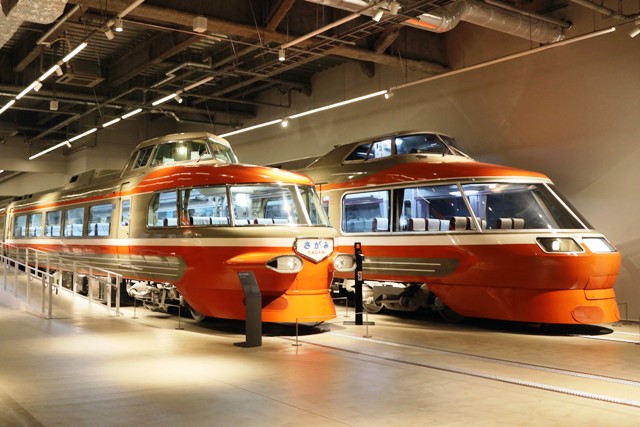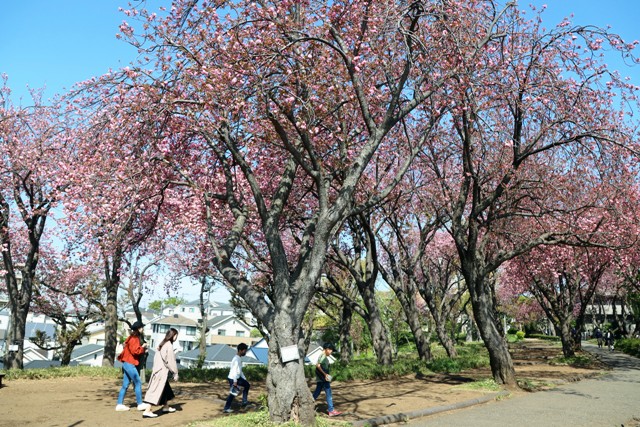Let me continue from where I left off my post on May 21st.
After a reunion with HiSE Car, I observed RSE (Resort Super Express) Car in the Romancecar Museum. RSE Car, also known as the EMU Odakyu 20000 series, was launched in 1991, when Odakyu started a direct operation between Shinjuku on the Odakyu line and Numazu on the JR Central Gotemba line. Two train sets were built by Nippon Sharyo and Kawasaki Heavy Industries. RSE Car had 20-meter-long bodies with standard trucks. It's different from NSE, LSE and HiSE Cars, which had 12 or 16-meter-long bodies with articulated trucks. The greatest feature of RSE Car was its two-storied carriages (Car number 3 and 4) at the center of the 7-car train. The upper-deck seats held wonderful views. Another feature was the semi-compartment seats on the lower-deck of Car number 4. It's a European-style carriage, and popular among family and group travelers.
After operating for 21 years, RSE Car was retired from the track in March 2012. I was sorry to hear that, but the God of trains was with us. In 2013, Fujikyu, a local railway company in Yamanashi Prefecture, purchased one set of RSE Car, and launched it under the name of Fujsan Express (Mt. Fuji Express). Fujisan Express consists of only three cars without two-storied carriages, but it still has a remnant of its former beauty in the Odakyu era.
Two carriages of RSE Cars, namely DeHa 20001 and SaHa 20151, are exhibited in the Romancecar Museum.





















